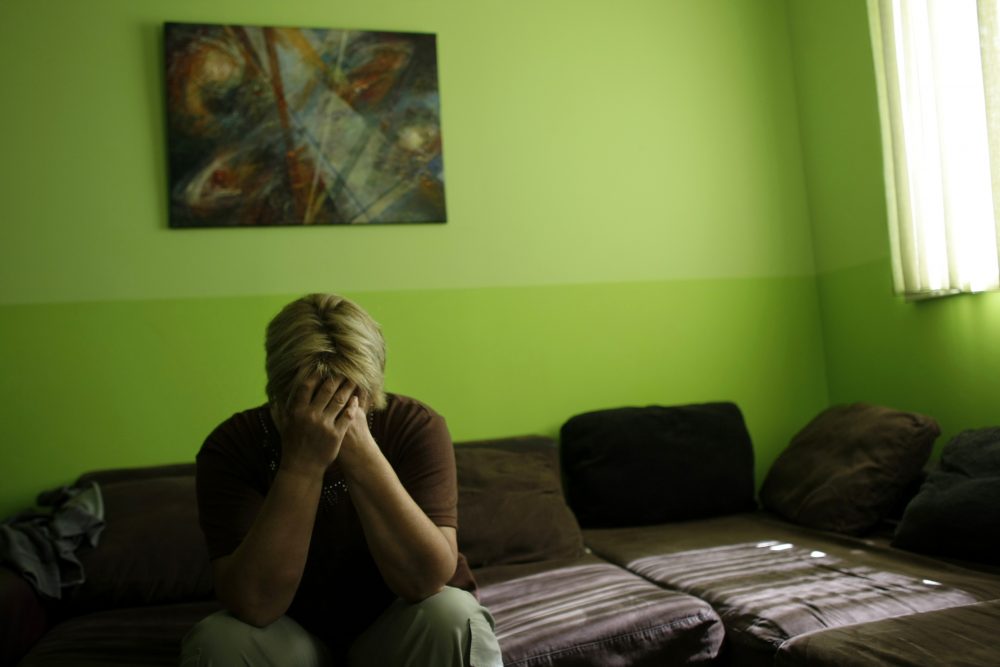If you or someone you know is experiencing intimate partner violence, contact the National Domestic Violence Hotline for local resources. For 24/7 assistance, call 800-799-7233 or text "START" to 88788.
According to a new study from the University of Houston's Institute for Research on Women, Gender and Sexuality, the number of domestic violence homicides in Houston doubled from 2019 to 2022, and in the past year, calls to shelters surpassed pre-pandemic levels.
Experts at 12 resource organizations around the region said increasing coordination infrastructure among assistance agencies as well as increased funding are key to addressing the problem.
"We have a lot of strengths when it comes to addressing the domestic and sexual violence crisis, but we do not have enough beds in shelters," said Emilee Whitehurst, president and CEO of Houston Area Women's Center. "When someone calls and we know they're in lethal danger, we still cannot necessarily get them into a shelter. In fact, some estimates say half the time, we cannot."
According to the study, Harris County currently has a total of 330 beds for survivors. For comparison, New York City has approximately 10 times that number, despite having less than two times the population.
Whitehurst stressed that that this puts a large strain on victims. "When someone does their part by reaching out for help and we, as a community, still cannot get them a place to go, that's unacceptable," she said.
On Feb. 7, the city of Houston announced plans to triple the Houston Area Women's Center's residential capacity. While it is a step forward, Whitehurst says they still need increased investment in order to further expand shelter capacity, pay for transportation to shelters and extend staffing of the crisis hotline.
Social inequality plays a critical role
The report found that Black and Latina women are particularly likely to experience the impact of intimate partner violence in the Houston area. Black women made up 52% of female intimate partner violence homicide victims, though they comprise only 20% of women in Harris County.
"Though domestic abuse happens in every community, the impact of that abuse is particularly large in communities of color," said Whitehurst. Experts say that the lack of access to resources like affordable housing, childcare and fair wages creates a situation in which women are especially vulnerable to abuse and have particular challenges in escaping an abusive household. These challenges disproportionately impact women of color in Houston.
Many women are financially dependent on their abusers and cannot afford to find alternate housing and transportation. While the wage gap between men and women is wider in Harris County than the national average, this problem is exacerbated for Black and Latina women. In Harris County, they make 45 cents and 37 cents on the dollar, respectively, when compared with white men. White women in Harris County earn an average of 70 cents on the dollar.
"In our community, we have a long-standing history of discrimination and disinvestment in communities of color," said Whitehurst. "We do not have to tolerate that. It is only because of the failure year after year to equitably invest in and distribute resources that we are seeing a select community being overly impacted by abuse."
Recent gun and abortion laws may make things worse
According to the report, 73% of domestic violence deaths involve the use of a firearm. A victim is five times more likely to die if a gun is present in a domestic violence incident than if it were not.
Even when it does not turn deadly, abusers often use firearms as a control tactic by creating an environment of terror for the victim. Dr. Elizabeth Gregory, director of the University of Houston's Institute for Research on Women, Gender and Sexuality, recalled multiple survivors reporting that their abusers threatened their lives with a gun on multiple occasions.
"Any time someone is living in a situation in which gun violence is a threat, there are going to be significant effects," she said.
The 5th U.S. Circuit Court of Appeals ruled last week that people currently under protective orders for committing domestic abuse are allowed to keep their guns under the 2nd Amendment. This means that even if someone is found in court to be a threat to their partner or children, they are still able to own and carry a firearm. In September 2021, Texas House Bill 1927 made it legal for most people in Texas over the age of 21 to carry a handgun without a permit. Advocates worry that increasingly lax gun restrictions will result in more domestic violence fatalities.
Advocates also worry decreased access to reproductive healthcare will make victims more vulnerable to abuse. In June 2022, the U.S. Supreme Court overturned Roe vs. Wade, and subsequently, Texas enacted a near total abortion ban that includes no exceptions for rape or incest.
Experts say this means there are fewer options for victims suffering from reproductive coercion, an abuse tactic in which the abuser takes control of the victim's reproductive health by sabotaging their birth control or forcing them to get pregnant repeatedly.
"One woman said her partner wanted her to be pregnant at all times," said Gregory. "He told her that he wanted to keep her pregnant ‘so no one else would look at her.'" Gregory said the victim's abuser also kept her from going to follow-up doctor's appointments after giving birth.
The cost associated with having more children could also keep women from being able to afford to leave and cause them to stay in abusive situations longer.
Organizations make a difference, but more investment needed
Whitehurst says HAWC's hotline has seen an increase of about 10,000 calls per year over the last couple of years, and they do not want callers to have to wait for assistance if they are in a life-or-death situation. "But that's an expensive proposition," she says. "We do not have guaranteed government funding; we have to apply for grants." Meanwhile, HAWC and other community organizations like it are strapped for cash. Whitehurst says she believes they could have more impact with additional funding.
Beyond financial support, experts say community members can make a difference by calling upon their representatives to enact change. "People can talk to their representatives and tell them they want more investment in their communities and in resources," said Gregory. "They can ask, ‘Why is the wage gap so large for women of color? Why does childcare cost so much? Why can known abusers have access to guns?' All of that affects this, and this has a profound effect on communities."

 74 °F
74 °F
